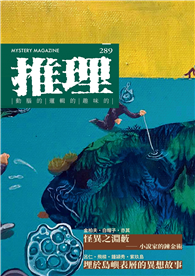Carmen Cicero (b. 1926) is now in the midst of his seventh decade at the cutting edge of contemporary art. His early Abstract Expressionist works of the 1950s, collected by the Museum of Modern Art, the Guggenheim, the Whitney, and other major museums, later evolved into clearly defined, dreamlike images indebted to Surrealist automatism. In the 1960s, Cicero was one of the first members of the American avant-garde to return to figuration, pursuing, through the 1970s and ’80s, a figurative expressionist style. This developed into his more recent "visionary" mode, in which he depicts, with a startling clarity, mysterious scenes animated by multiple contradictory feelings--unfulfilled desires, jealousy, despair, and isolation--as well as a generous dose of humor.
Throughout his entire artistic evolution, drawing has remained central to Cicero’s practice, allowing him to depict the products of his fertile imagination with a vivid immediacy--a tendency that has continued with his watercolors, which he focused on seriously beginning in 1980. This oversize volume presents a generous selection of drawings and watercolors from every stage of Cicero’s career. The drawings are printed on an uncoated stock that recalls the artist’s favored Arches watercolor paper; many appear at close to their actual size. The watercolors are printed on a coated art paper for the greatest vibrancy.
An essay by critic David Ebony brings out the pathos, humor, and consummate skill of Cicero’s art, while a foreword by art historian Annette Blaugrund takes the reader inside Cicero’s studios and working methods. An interview with the artist; a detailed chronology with review excerpts; and reprints of critical essays by Lowery Stokes Sims, Donald Kuspit, and Robert Berlind further add to the value of this work, which will be an essential acquisition for any library of American art.
| FindBook |
有 1 項符合
Carmen Cicero: Drawings and Watercolors: Tales of Danger, Intrigue, and Humor的圖書 |
 |
Carmen Cicero: Drawings and Watercolors: Tales of Danger, Intrigue, and Humor 作者:Ebony 出版社:Abbeville Press 出版日期:2024-12-17 語言:英文 規格:精裝 / 208頁 / 普通級/ 初版 |
| 圖書館借閱 |
| 國家圖書館 | 全國圖書書目資訊網 | 國立公共資訊圖書館 | 電子書服務平台 | MetaCat 跨館整合查詢 |
| 臺北市立圖書館 | 新北市立圖書館 | 基隆市公共圖書館 | 桃園市立圖書館 | 新竹縣公共圖書館 |
| 苗栗縣立圖書館 | 臺中市立圖書館 | 彰化縣公共圖書館 | 南投縣文化局 | 雲林縣公共圖書館 |
| 嘉義縣圖書館 | 臺南市立圖書館 | 高雄市立圖書館 | 屏東縣公共圖書館 | 宜蘭縣公共圖書館 |
| 花蓮縣文化局 | 臺東縣文化處 |
|
|
圖書介紹 - 資料來源:博客來 評分:
圖書名稱:Carmen Cicero: Drawings and Watercolors: Tales of Danger, Intrigue, and Humor
內容簡介
|











